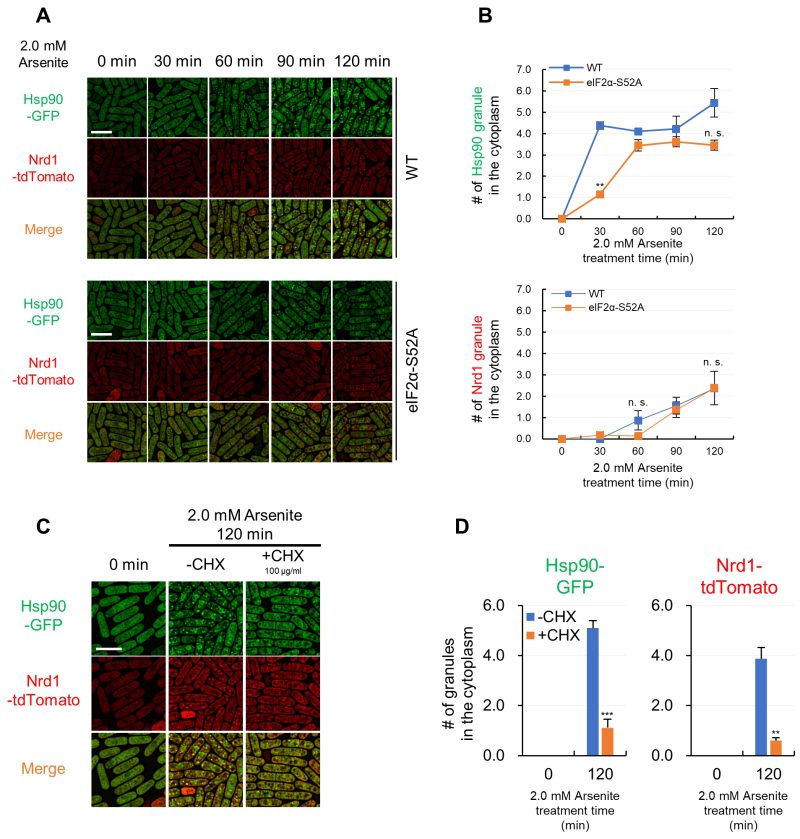Back to article: Arsenite treatment induces Hsp90 aggregates distinct from conventional stress granules in fission yeast
FIGURE 5: Hsp90/Nrd1 granule formation is delayed by non-phosphorylatable eIF2α mutation and inhibited by cycloheximide. (A) Representative fluorescence images of Hsp90-GFP and Nrd1-tdTomato in the wild-type cells (WT) and non-phosphorylatable eIF2α-S52A mutant cells (eIF2α-S52A) upon 2.0 mM arsenite treatment for the indicated times at 27◦C. (B) The number of Hsp90 granules and Nrd1 granules in WT cells (blue) and eIF2α-S52A cells (orange) per cell. (C) Effect of cycloheximide (CHX) on the arsenite-mediated Hsp90/Nrd1 granule formation. Cells were pre-incubated with or without 100 µg/ml CHX for 10 min and then observed after 2.0 mM arsenite treatment for 120 min at 27◦C. (D) The number of Hsp90 granules and Nrd1 granules per cell. The graphs show mean ± SE (n=3). P*<0.05, P**<0.01, P***<0.001; n. s., not significant; significantly different from each sample by paired Student’s t-test. Scale bars: 10 µm.

